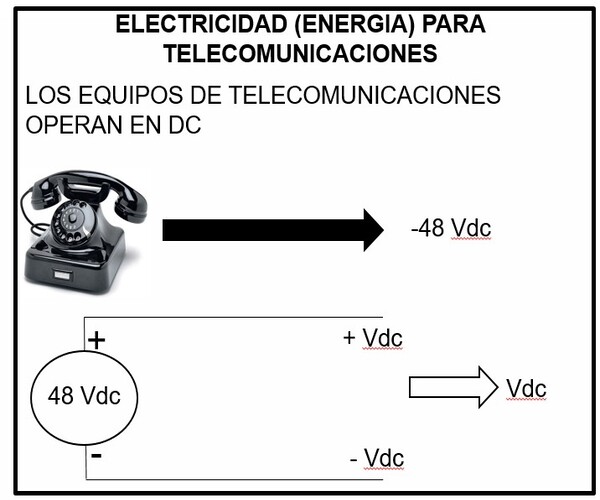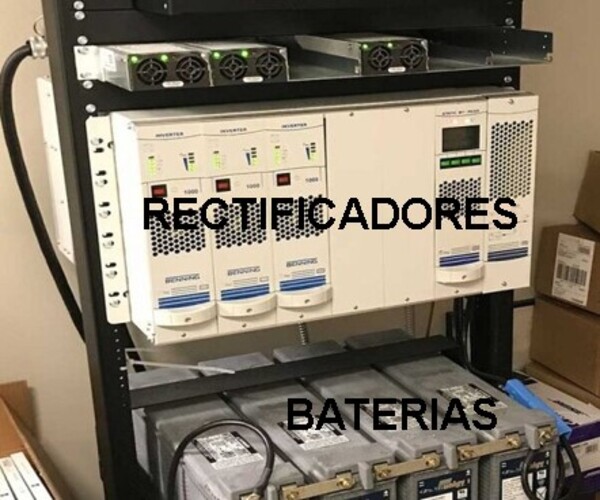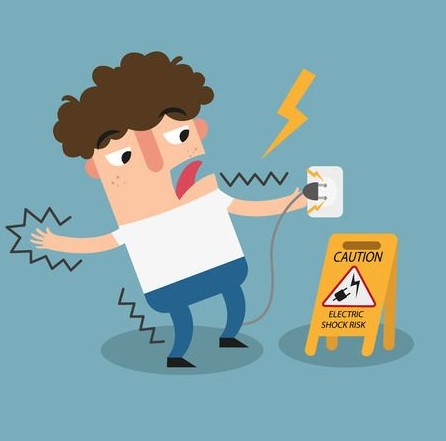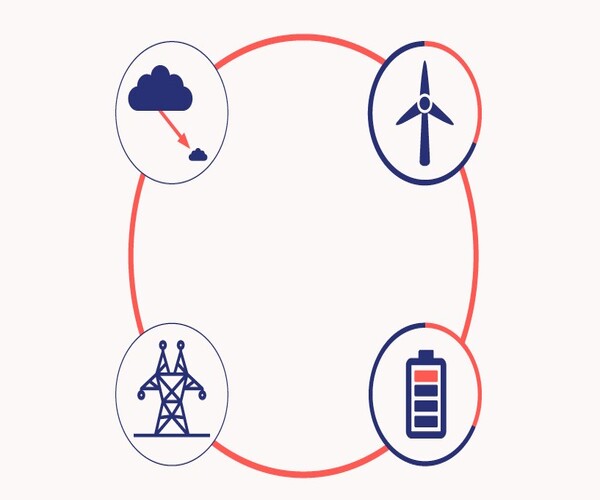AC/DC Power
Electrical energy in telecommunications
To give you a better understanding of what we will discuss in this article Electrical power in telecommunications, we recommend you to read the post Electric power: your first steps, already published.
We have already seen, in previous posts and as the crow flies, what electricity is and the types of it that are AC electricity and DC electricity.
What type of energy is used in telecommunications?
Telecommunications equipment operates on DC electrical power, which is a worldwide agreement based on maintaining uninterrupted service.
Because of this, and because it can be stored, DC electricity is used in airplanes, automobiles and others where a reliable power source is required.
Likewise, the lightning you see in thunderstorms is a form of DC power.
However, it should be clarified that the equipment that allows the operation of the DC sources of the system, operate with AC electrical energy.
Among them are the AC/DC rectifiers that are characteristic of telecommunications power systems.
An important clarification is that in the image below, the energy is represented only for the case of fixed telecommunications.
For mobile telecommunications, this varies a little and I will explain it in the articles Telecommunications power system operation. Part 1 and AC – DC Rectifiers in telecommunications.
These are in the process of elaboration, for this we take some days in order to offer you a useful and quality material.

Regarding the previous image, we clarify that Vdc means DC electricity voltage and Vac is AC electricity voltage.
The same distinction is made with the current, which is abbreviated as I.
But why is it more reliable to operate with DC electricity than with AC electricity?
This is because as stated in the post Electric power: your first steps, DC energy can be stored in batteries, for more details see our post Batteries: all the basics you need to know that we are writing.
This is not possible with AC electricity, so it must be used at the time of receiving it.
Thus, in the event of a commercial power failure, telecommunications are kept operational using only batteries.

Another important point is that at low DC voltages, the risk of electrocution accidents is much lower.
So much so, that you can verify that at the fixed telephone connection point in your house, the voltage is around 48 Vdc.
If you touch the 2 ends of the cable, you will not feel anything, but if you do this on, for example, a socket, you will suffer a dangerous electric shock.

Electric power systems for fixed telephony and mobile telephony
Now, you may be wondering if mobile and landline telephony use the same type of electrical power.
The answer is yes, although they differ in voltage levels, current values and grounding or 0 volt.
Since, in fixed telephony, which is the one that provides you with telephone and fixed internet service in your home, it uses a negative DC voltage or voltage and its value is 48 Vdc.
On the contrary, in mobile telephony the DC voltage or voltage is of positive sign with a voltage of 24 Vdc.
This difference occurs due to the position of the grounding points on the poles of the assembly.
In this way, the positive pole of the fixed telecommunications power system is connected to ground, while in the case of the mobile ones, the negative pole is connected to ground.
You should know that, especially for electronics professionals, these concepts are difficult to assimilate.
This is due to the fact that in the discipline, the common or ground point always corresponds to the negative pole.
Even in vehicles, the ground point that goes to the chassis is connected to the negative pole of the system.
The latter we will explain in more detail in articles, so we invite you to stay tuned for our next contents.
By subscribing to our website energydcac you will find out about our new and interesting contents that we are working on for you and other news, sign up for free!
You can also purchase the DC power systems sizing and design course for telecommunications and critical systems. Here, you’ll find everything about this subject. We present the course content to you by clicking here.
Image sources
- electrical-technology.com
- 12voltplanet.co.uk
- energydcac.com

